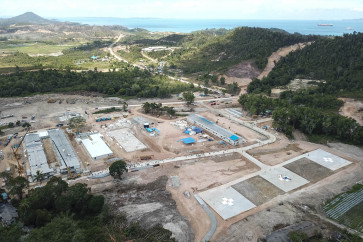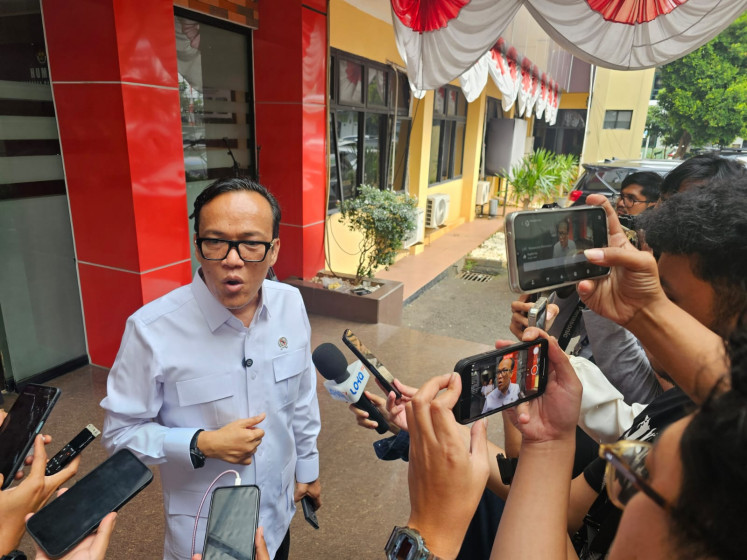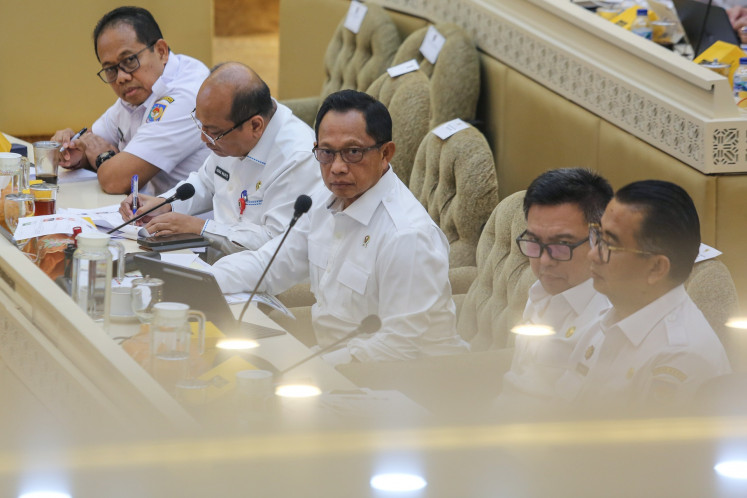Popular Reads
Top Results
Can't find what you're looking for?
View all search resultsPopular Reads
Top Results
Can't find what you're looking for?
View all search resultsTower sector to grow by 15%: Analysts
The telecommunications tower sector will enjoy steeper growth than its complementary sector — cell phone operators — owing to the fact that the former demands less investment in new technology, analysts say
Change text size
Gift Premium Articles
to Anyone
T
he telecommunications tower sector will enjoy steeper growth than its complementary sector — cell phone operators — owing to the fact that the former demands less investment in new technology, analysts say.
Nitin Bhat, partner and head of consulting at Frost & Sullivan Inc., said that tower companies could grow by at least 15 percent this year.
“Meanwhile, telecommunication operators will grow by far less,” he told The Jakarta Post.
A study by Frost and Sullivan shows that growth among operators will decelerate in the coming years. In 2012, operators’ revenue advanced year-on-year by 16.6 percent to Rp 134.5 trillion (US$13.9 billion).
However, that growth is expected to decrease to 10.8 percent in 2013 and 7.6 percent by 2015. The constant need to invest in new telecommunication technology amid declining revenues from mobile voice and message services are key factors in this flattening growth.
Frost & Sullivan data shows that by 2015, 45 percent of subscribers will have adopted third generation, or 3G, mobile technology, a marked rise from the current 23 percent of subscribers.
Debnath Guharoy, regional director for Asia at Roy Morgan Research, said it was “the nature of the operator business” to invest big every year for network enhancements.
“Operators are forever pumping in money on more towers, network speeds, almost everything in fact, because they also need to compete with other operators,” Guharoy told the Post.
Conversely, tower operators were saved from investing in cutting-edge technology as they were primarily the infrastructure providers, market players noted.
“Those selling hardware are the ones making money,” Guharoy added.
Nobel Tanihaha, the president director of tower company PT Solusi Tunas Pratama (SUPR), similarly said that the tower industry would experience sharper growth than operators. “Around 6,000 new towers are built annually and Indonesia already has a rough total of 50,000 towers,” he said.
He added that the growth rate would be even higher when the amount of new co-locations was factored in. A tower can be jointly used by operators, a sharing practice known as co-location.
Nobel added that eastern Indonesia was where the action was in terms of the construction of new towers.
However, operators were investing heavily to upgrade their telecommunication equipment attached to towers in western Indonesia, he said.
The International Data Corporation (IDC) predicts that telecommunication spending in Indonesia will reach $17 billion by the end of 2013.
“There is a lot of capacity building going on in the west,” he said, adding that this benefited his business.
The company has set revenue growth at 50 percent this year after booking Rp 351.2 billion in revenue as of September 2012.
However, Nobel added that tower companies needed strong finances as well.
“Companies in this industry need large capital expenditures to support the construction of new towers since we cannot always rely on tower acquisitions,” he said.
SUPR is investing Rp 1.5 trillion this year to expand its tower network chiefly through the construction of 1,500 new towers.










